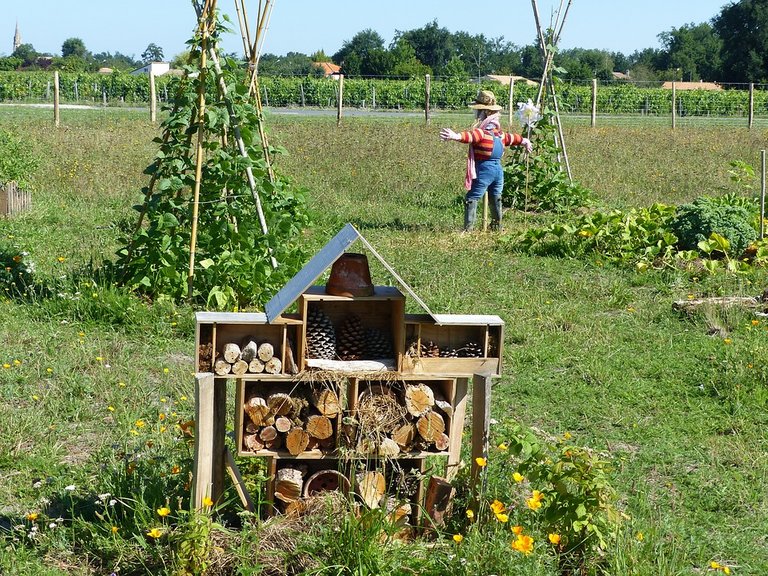Organic gardening involves avoiding the use of chemicals that promote plant growth or serve as a pest control. Instead, it relies on natural principles that have been used for thousands of years. Permaculture goes a step further and emphasizes sustainability and working with the natural environment. The popularity of permaculture is growing as more and more people realize that this inexpensive and easy-to-grow method is a great way to get healthy fruits, vegetables, herbs and flowers.
In short, permaculture is a branch of eco-design, eco-engineering and environmental design that develops sustainable human settlement architecture and self-sustaining agricultural systems modeled on natural ecosystems.
The very word and principles were devised by Australians Bill Mollison and David Holmgren. In the 1970s, they began to develop ideas for stable agricultural systems on the island of Tasmania. It was a reaction to the dangers of the rapidly growing use of the industrial-agricultural method. In their view, these methods have further poisoned the soil and water, reducing biodiversity and altering soil fertility. A design approach called "permaculture" was their answer, and they released their first publication, Permaculture One. In the early 1980s, agricultural design expanded to sustainable human habitat design.

Source
Permaculture design is also applied in a natural way of building making sustainable human communities
Caring for the Earth : Ensuring that all life systems continue and multiply. This is the first principle, because without a healthy country, people cannot progress. The basic ethical principles of permaculture are:
Caring for People : Ensuring that people have access to those resources necessary for their existence.
Fair distribution : Healthy natural systems use outputs from each element to feed the others. And people can do the same, managing our needs can help protect natural resources.
Permaculture begs the question, “Where does this element go? How can it be set up for maximum system benefit? "To answer this question, the central concept of permaculture maximizes useful linkages between components and the synergy of the final design. This means that the focus of permaculture is not on each individual element, but on the relationships created among the elements that are co-located along the way.
Permaculture design minimizes waste, human labor and energy input to build systems with maximum benefits between element design to achieve a high level of synergy.
It should be noted that permaculture is a design system, and as such can be applied to anything that requires design. It is most commonly applied to home design and landscaping, integrating techniques such as agroforestry, natural construction and rainwater harvesting.
Here are some common permaculture practices:
Agroforestry is an integrated approach that combines trees and shrubs with crops and / or livestock. In fact, it is a combination of agricultural and forestry technology to create more productive, profitable, healthier and more sustainable use of the land system. It is possible to use trees or shrubs in agricultural systems, or grow non-forest products in the forest, thus creating "food forests" or forest gardens.
Natural construction involves a number of construction systems and materials that place great emphasis on sustainability. Ways to achieve sustainability through natural construction are based on sustainability and use of minimal processing, renewable energy, as well as recycled material that produces a healthy living environment and maintains air quality. Natural construction tends to rely on the human workforce, more than technology. We wrote more about straw houses as a form of natural construction here .
Sustainable house made of straw bales, with solar collectors
Rainwater harvesting is a very important part of permaculture because in this way we can provide drinking water, cooking and personal hygiene and water for livestock and watering plants. This makes an important contribution to the availability of drinking water. Also, domestic wastewater is collected from dishwashing or laundry, so-called "gray water", which can be recycled and used for environmental irrigation. This water does not contain human waste, unlike "black water" that occurs after bathing, but it can be used to flush toilets.
Any organic material may be used for mulching ; stones, leaves, cardboard and the like as they perform multiple functions. They serve to absorb rainfall, reduce evaporation, provide nutrients, increase soil organic matter, suppress weed growth and germination, maintain soil temperature and protect against frost. Mulching actually mimics the natural processes that occur in forests. When mulch is placed properly and in combination with other permaculture principles, it can generate healthy, productive and easily maintained ecosystems.
This post earned a total payout of 0.646$ and 0.323$ worth of author reward that was liquified using @likwid.
Learn more.